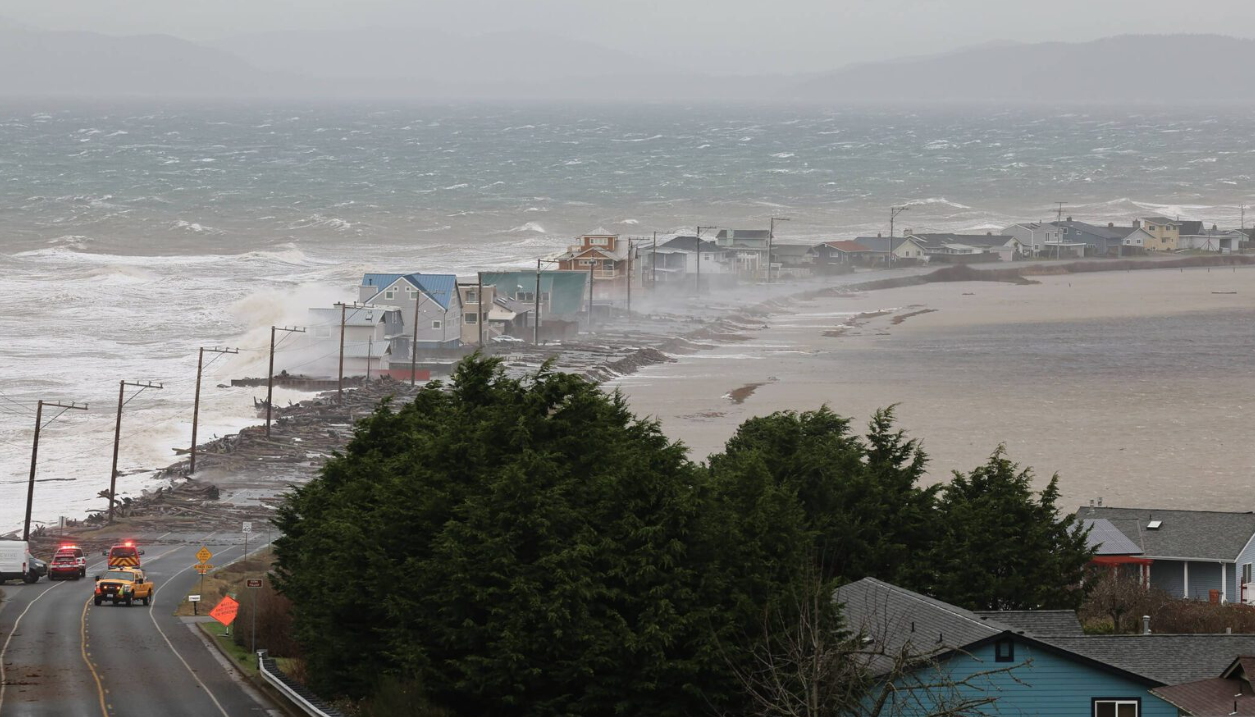Wind Events

Windstorm preparedness and actions for Whidbey Island
Living on Whidbey Island, it's crucial to be prepared for windstorms, as they are a common hazard. Here's a breakdown of actions you can take:
Before a windstorm
-
Develop a Family Disaster Plan and assemble a Disaster Supplies Kit:
- Include flashlights, a battery-powered radio, extra batteries, a wind-up clock, and enough nonperishable food and water for several days.
- Consider a small generator if you use electrically powered life-sustaining equipment, ensuring safe installation.
- Have corded phones available and charge cell phones.
-
Secure your property:
- Anchor outdoor objects and remove dead or overhanging tree branches.
- Learn how to manually open your electric garage door.
- Familiarize yourself with alternative heat sources and fuel supplies.
-
Know your resources and contacts:
- Have your local utility's power outage reporting number handy.
- Familiarize yourself with evacuation routes.
- Check on neighbors who may need assistance.
- Know emergency plans for work and school.
-
Additional preparedness:
- Fill vehicles with gas.
- Trim trees and shrubs.
- Be aware of alternative routes.
- Review your insurance coverage.
During a windstorm
-
Stay indoors and safe:
- Avoid going outside or driving.
- Stay away from windows and go to lower floors in multi-story homes.
- If the power goes out, turn off the stove and natural gas appliances, and never use a gas stove for heat or burn charcoal indoors.
- Never use a generator indoors.
- Keep refrigerator and freezer doors closed.
- Disconnect electrical heaters and appliances if power is out.
- Conserve water and keep doors, windows, and draperies closed.
- Be cautious with candles and ensure ventilation if using kerosene heaters or gas lanterns indoors.
- Leave a light switch on to indicate when power is restored.
- Avoid downed power lines.
-
Stay informed:
- Listen to your radio for emergency instructions.
- Report power outages, but limit other calls to emergencies.
- Check your fuse box or circuit breaker if you are the only one without power.
-
If driving:
- Pull over away from trees and seek refuge in a safe building if possible.
- Avoid hazards like overpasses and power lines.
After a windstorm
-
Safety First:
- Check for injuries and evacuate damaged buildings.
- If you smell gas, open windows, leave the building, and call your gas company.
- Stay away from and report downed power lines.
-
Help others and communicate:
- Provide assistance to neighbors.
- Attempt to contact your out-of-area contact, but avoid making local calls.
- Continue monitoring your radio for instructions or an "all clear".
Being prepared is essential for staying safe during and after windstorms on Whidbey Island. Having a plan, assembling a kit, and knowing what to do can significantly impact your safety. You can find more information from the Washington State Department of Health and Island County, WA (.gov) websites.
Informational Links:
- Federal Emergency Management Agency(Opens an external site in a new window)
- Ready.Gov(Opens an external site in a new window)(Opens an external site in a new window)
- Centers for Disease Control and Prevention(Opens an external site in a new window)
- National Weather Service
- Weather Service: Seattle(Opens an external site in a new window)(Opens an external site)
- Weather Service: Portland(Opens an external site)(Opens an external site in a new window)
- Weather Service: Pendleton(Opens an external site in a new window)(Opens an external site in a new window)
- Weather Service: Spokane
- Washington State Department of Natural Resources(Opens an external site in a new window)
- Washington State Department of Transportation
